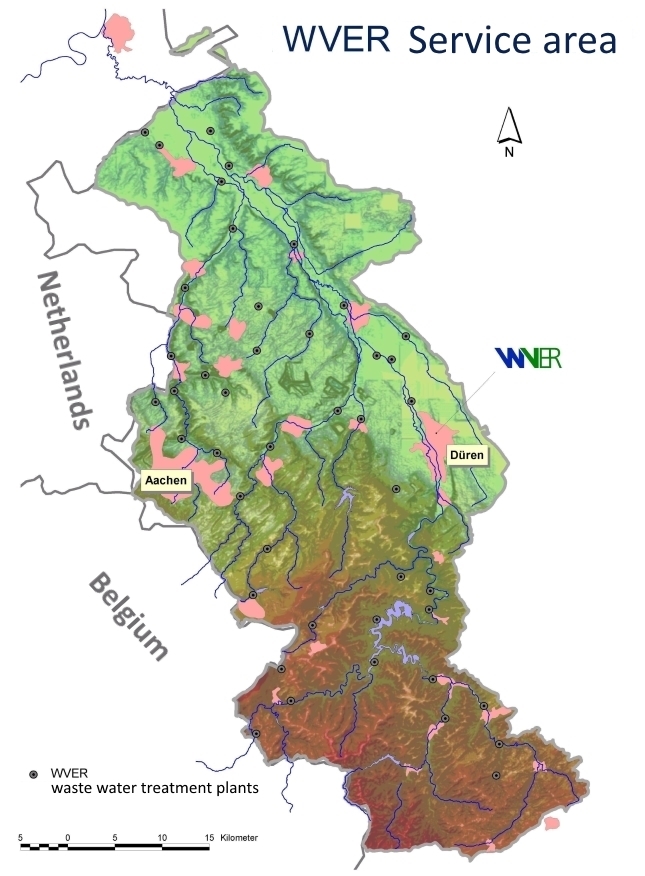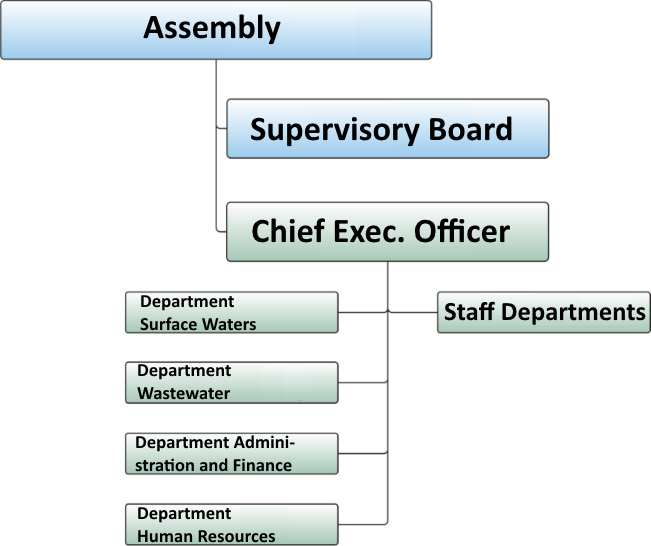WVER Responsibilities
Wasserverband Eifel-Rur (WVER), which suceeded a number of small public water corporations in the German Rur catchment area, commenced ist operations on 1 January 1993. Its responsibilities comprise the full range of water services:
- Flood control at water courses and water quantity management
- Provision of water for drinking water and industrial water production and for water power applications
- Irrigation and drainage
- Residential, commercial and industrial waste water treatment
- Restoration of a near natural state of waterbodies and achievement of a good ecological status
- To perform its functions, WVER operates a system of interconnected reservoirs, numerous flood control works and advanced waste water treatment facilities and handles all river maintenance works in its service areas.
The public corporation sees itself as an efficient service provider in the water industry with a responsibility for the conservation of natural resources for the present and future generations.
Service area
The service area of WVER comprises the above-ground Rur catchment area in the State of Northrhine-Westphalia in Germany. It stretches from Heinsberg in the north to Hellenthal in the south and from Aachen in the west to Düren in the east. Some 1.1 million inhabitants live in the 2,087 sq. km. area.

Flowing Waters
The total length of flowing surface waters in the WVER service area is approx. 1,900 km. WVER is responsible for the management of 51 flood retention basins and other flood control works. Further flood control facilities are under design or under construction.
Reservoirs
WVER operates six reservoirs with a total capacity of 300 million cubic meters in the northern part of the Eifel hills in the south of its service area.
The reservoirs were mainly developed for flood control and flow maintenance during the dry season. The annual output of the six power plants driven by water power is 62 GWh (2016). The WVER reservoirs supply about 22,2 million cubic meters of drinking water (2016) for the Aachen region, the Düren area and parts of the Eifel hills.
Wastewater treatment
To maintain water quality, WVER currently operates 43 waste water treatment plants with a total population equivalent of 2.1 million (including industrial waste water). The treatment of some 135 million cubic meters of waste water per year produces some 30.000 tons of dry sewage sludge to be disposed of.
WVER also operates sewer systems as well as about 800 other structures such as pump stations and stormwater basins.
Employees
WVER employs some 600 persons from a wide range of professions such as engineers, biologists, chemists, wastewater and dam technicians, electricians, mechanical fitters, utility technicians, IT specialists, office workers, business administration graduates and lawyers.
WVER Structure
Legal form:
Public corporation
Creation:
Wasserverband Eifel-Rur Ordinance
Supervisory authority:
Ministry of the Environment, Agriculture, Nature Protection and Consumer Affairs of the State of Northrhine-Westphalia
Governance:
Assembly, Supervisory Board, Chief Executive Officer

Members:
Municipalities located wholly or partly in the service area, counties, industrial wastewater dischargers and water utilities.
Chairman of the Supervisory Board:
Paul Larue, mayor of Düren
Chief executive officer:
Dr.-Ing. Joachim Reichert
Adress and Map:
Wasserverband Eifel-Rur
Eisenbahnstr. 5
52353 Düren
Tel.: +49 2421 4940
Fax: +49 2421 1508
kontakt@wver
www.wver.de

